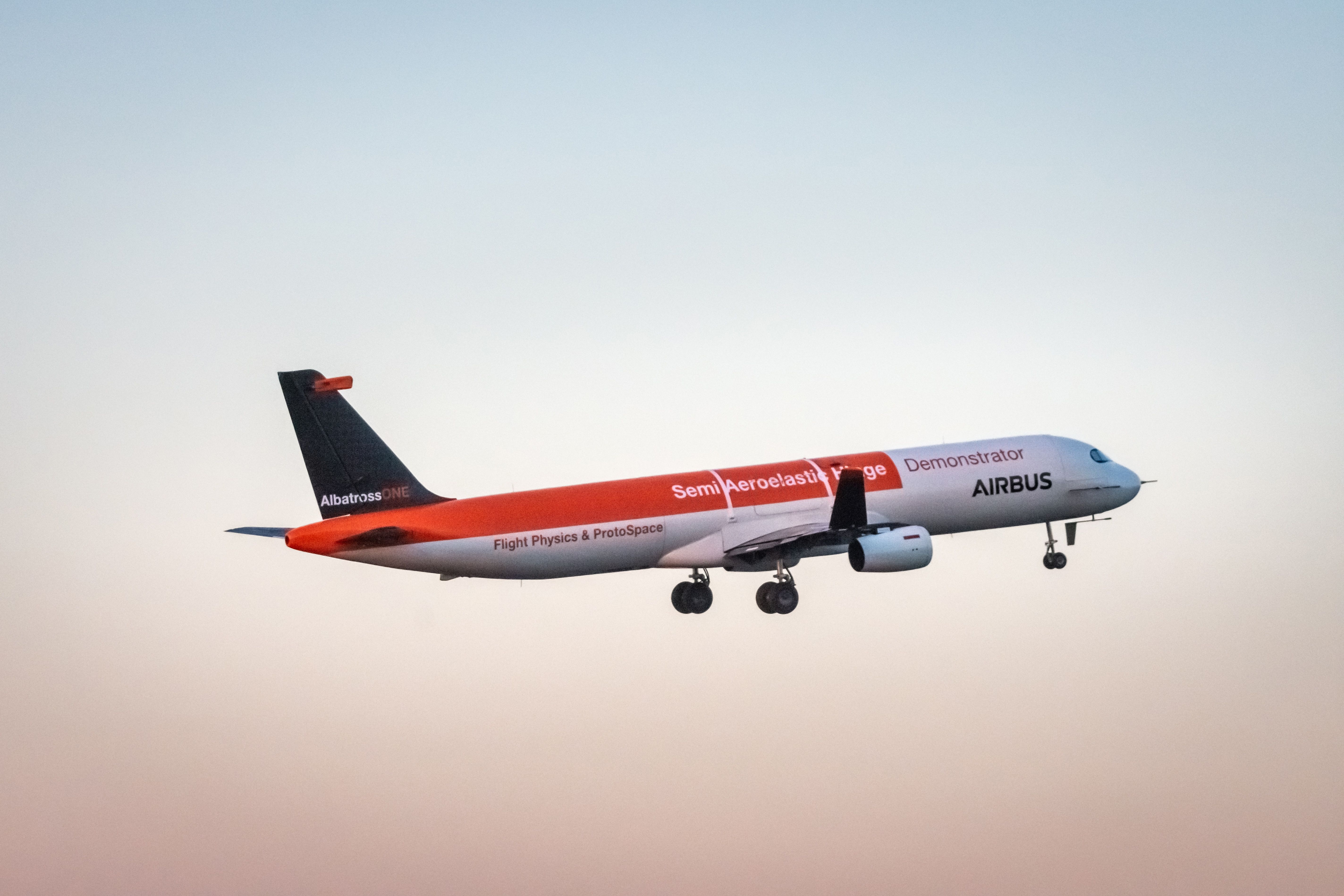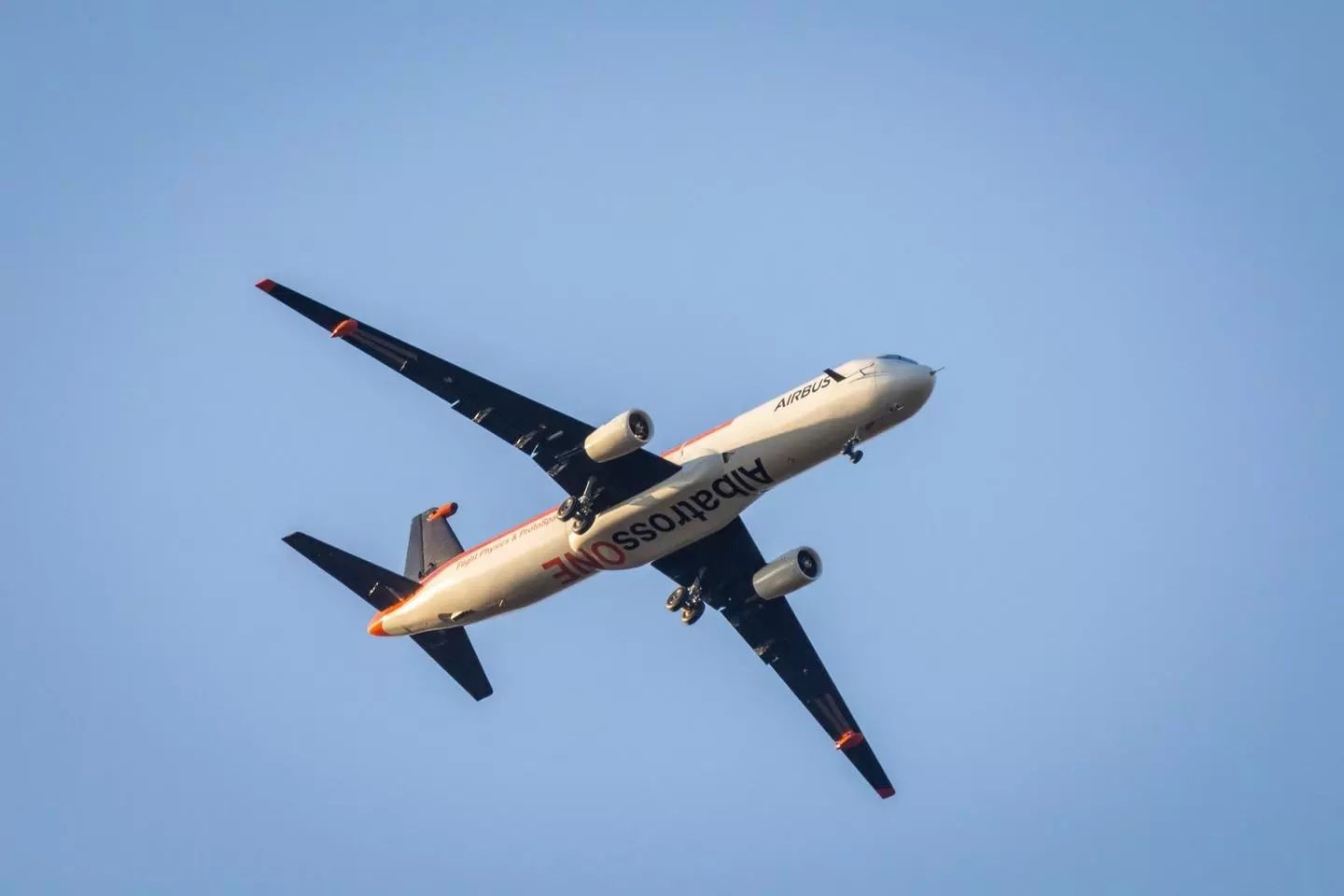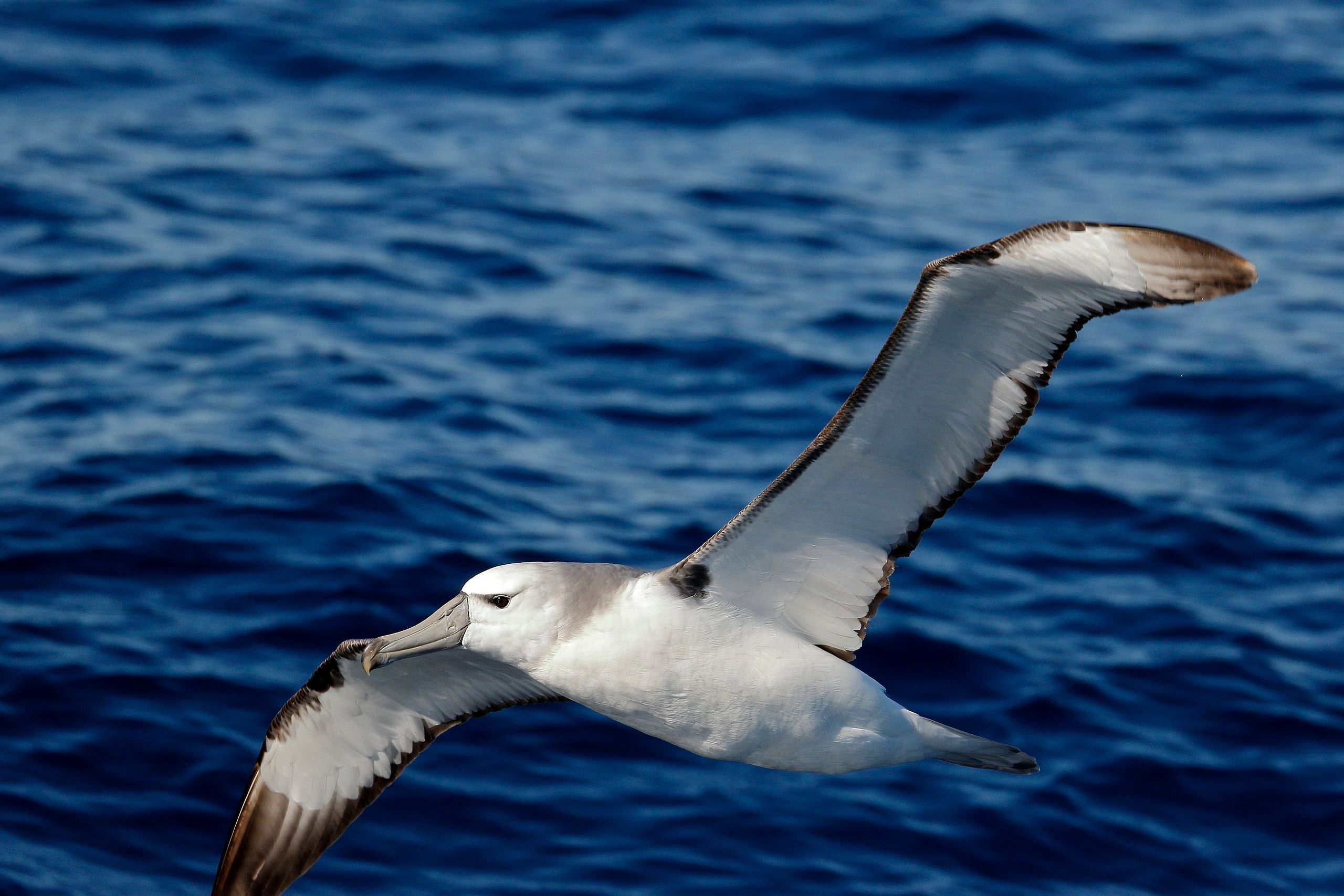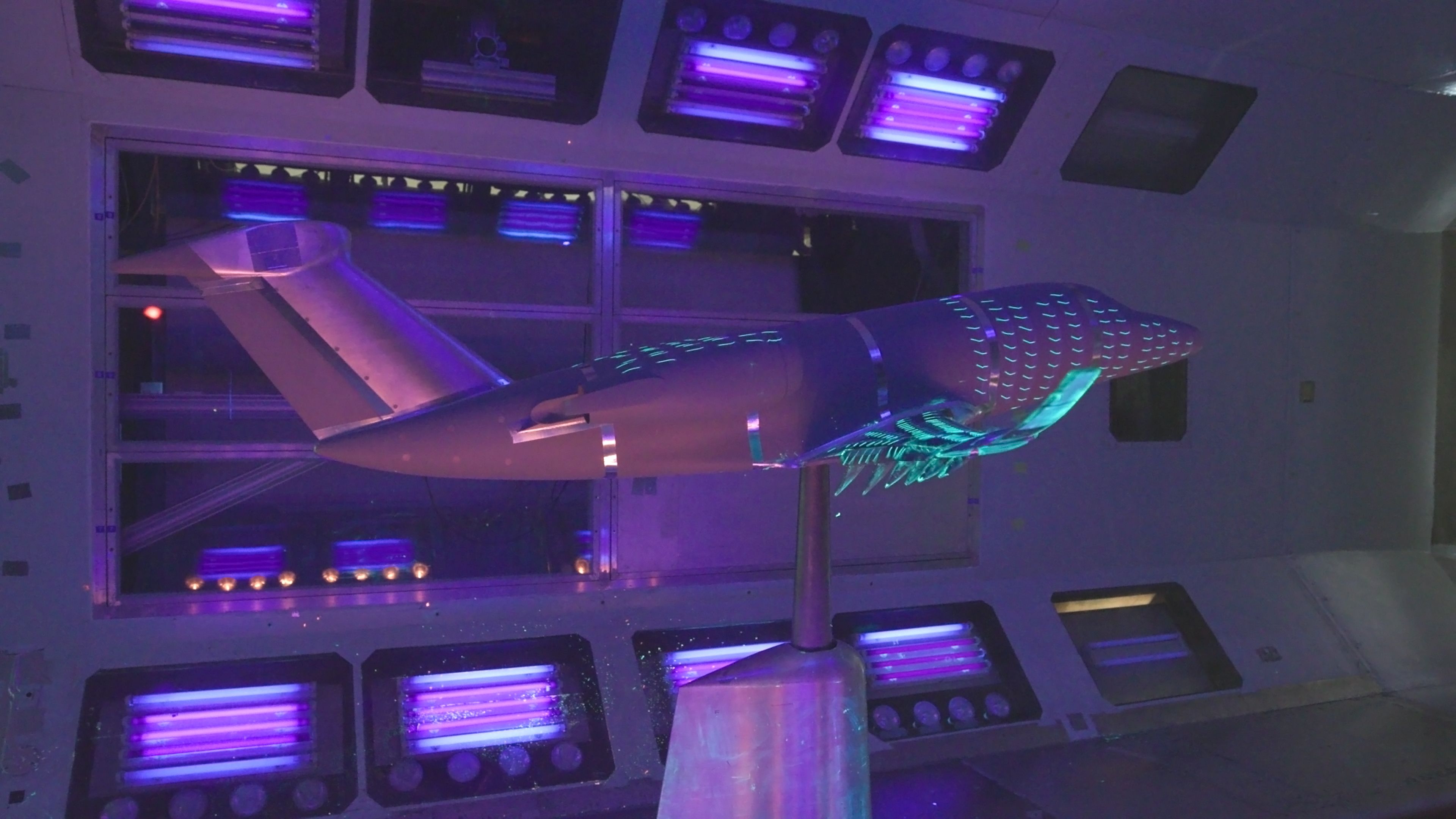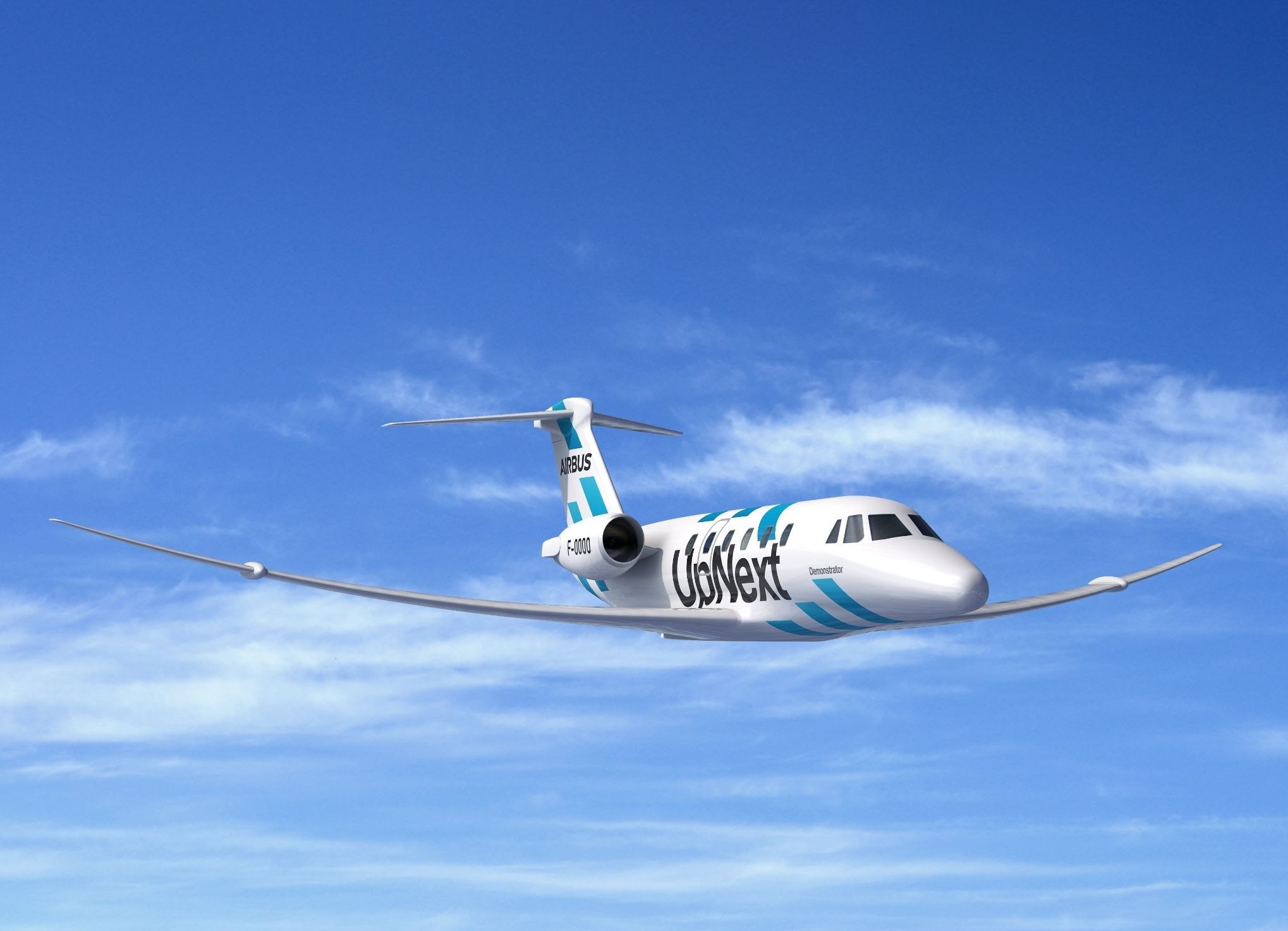New aircraft launches are not the only thing to watch with the major manufacturers - there are plenty of exciting technological advancements happening in the background. Airbus demonstrated its new concept of semi-elastic wingtips, inspired by one of the world's largest birds, in 2019. Much heralded in 2019 as the aircraft wings of tomorrow, development was quiet for a while but has since fed into the design of its latest eXtra Performance Wing concept.
Remote-controlled aircraft demonstrator in 2019
In June 2019, Airbus announced that its engineers had developed a new wing-concept that could reduce drag and counteract the effects of turbulence. The concept was demonstrated with what was named AlbatrossONE, a small-scale, remote-controlled aircraft demonstrator with "semi-elastic" hinged wing-tips. The idea was to mimic the aerodynamic qualities of the giant seabird after which it was named, and to produce the next generation, revolutionizing wing design.
Lessened load and increased fuel-efficiency
The freely flapping wingtips can react to and flex according to wind gusts. This means it significantly lessens load, which in turn would lead to a more fuel-efficient aircraft. And for those who do not enjoy being shaken and stirred in the sky, the good news is it also means less impact from turbulence. It also reduces the weight of the wing, compared to conventional constructions. As the wing does not transport the same amount of load to the fuselage, it does not need to have heavily reinforced wing boxes.
Jean-Brice Dumont, Airbus’ Executive Vice-President of Engineering, explained this, saying:
"Allowing the wing-tips to react and flex to gusts reduces the loads and allows us to make lighter and longer wings – the longer the wing, the less drag it creates up to an optimum, so there are potentially more fuel efficiencies to exploit."
Get the latest aviation news straight to your inbox: Sign up for our newsletters today.
Lock and unlock the wings at will
The engineers looked to the bird with the widest wingspan in the world, the albatross, for inspiration when developing the new wing. The albatross can glide over great distances with wings that lock in at the bird's shoulder to keep it soaring. The locking function allows it to spend much of its time facing the wind and travel far with little effort. The wings then unlock as needed for propulsion, steering, or accommodating for turbulence. No other bird is able to use their wings in the same way.
The AlbatrossOne scale model was based on the manufacturer's A321 aircraft. It was made out of carbon fiber and glass fiber-reinforced polymers. The flights in mid-2021 followed a 20-month development program at Filton.
Further testing with the eXtra Performance Wing project
A few months after the first flight with the model, Airbus said that the next steps would be to conduct further test flights, combining the two flight modes. This would enable the wingtips to unlock during flight, and for engineers to examine and observe that transition. However, things remained quiet, with no immediate further tests publicized.
In September 2021, Airbus launched the eXtra Performance Wing project and moved to flight tunnel testing in 2022 with a scale model. This takes the concept of the semi-elastic wingtips further. As well as the aerodynamic and performance benefits already investigated, the new project looks further at the active control of the wing - including the use of spoilers, gust sensors, and multifunctional trailing edges that dynamically change the wing surface in flight.
Sabine Klauke, Airbus Chief Technical Officer, explained the potential of the project in 2021, saying:
“Airbus’ extra-performing wing demonstrator is another example of Airbus’ novel technology-oriented solutions to decarbonize the aviation sector. With this demonstrator, we will make significant strides in active control technology through research and applied testing of various technologies inspired by biomimicry."
Airbus aims to integrate the wind tunnel tests into the actual flight tests with an upcoming wing prototype on the Cessna Citation VII business jet platform. This will take the project forward to test in representative flight conditions.
These are exciting developments to long-established wing technology. Hopefully, we will see more development soon, but it will, of course, be a long time before we see changes to large aircraft. Feel free to discuss the project and the new designs further in the comments section.

